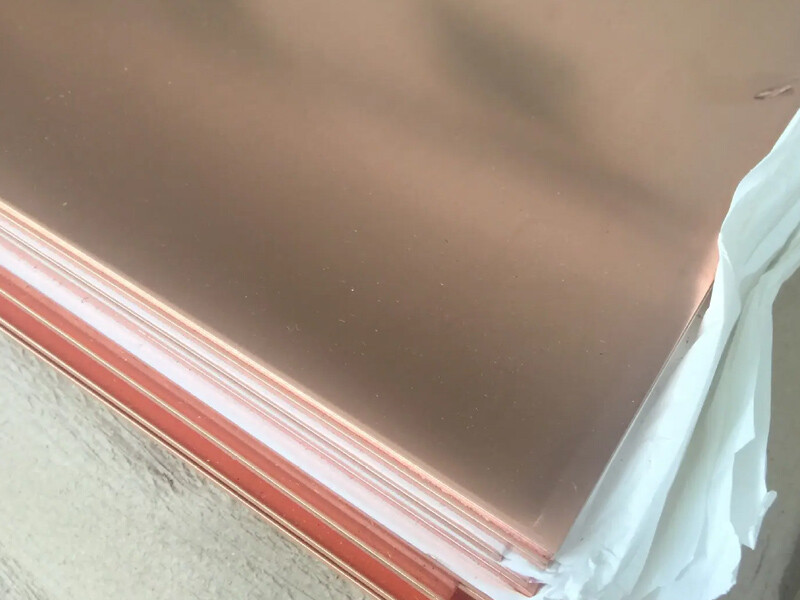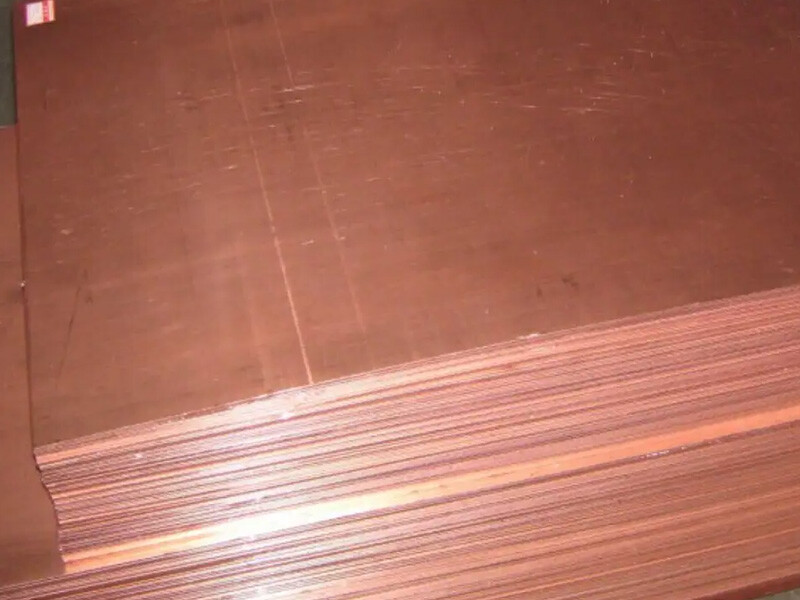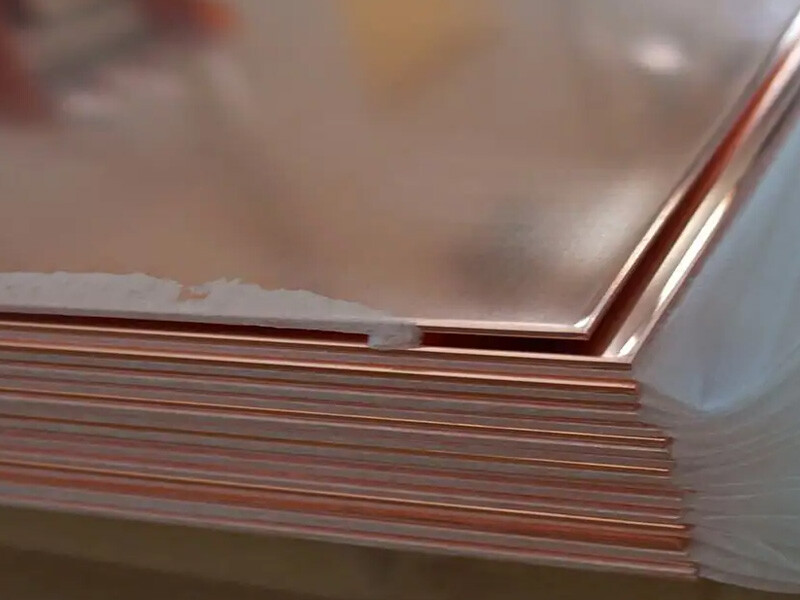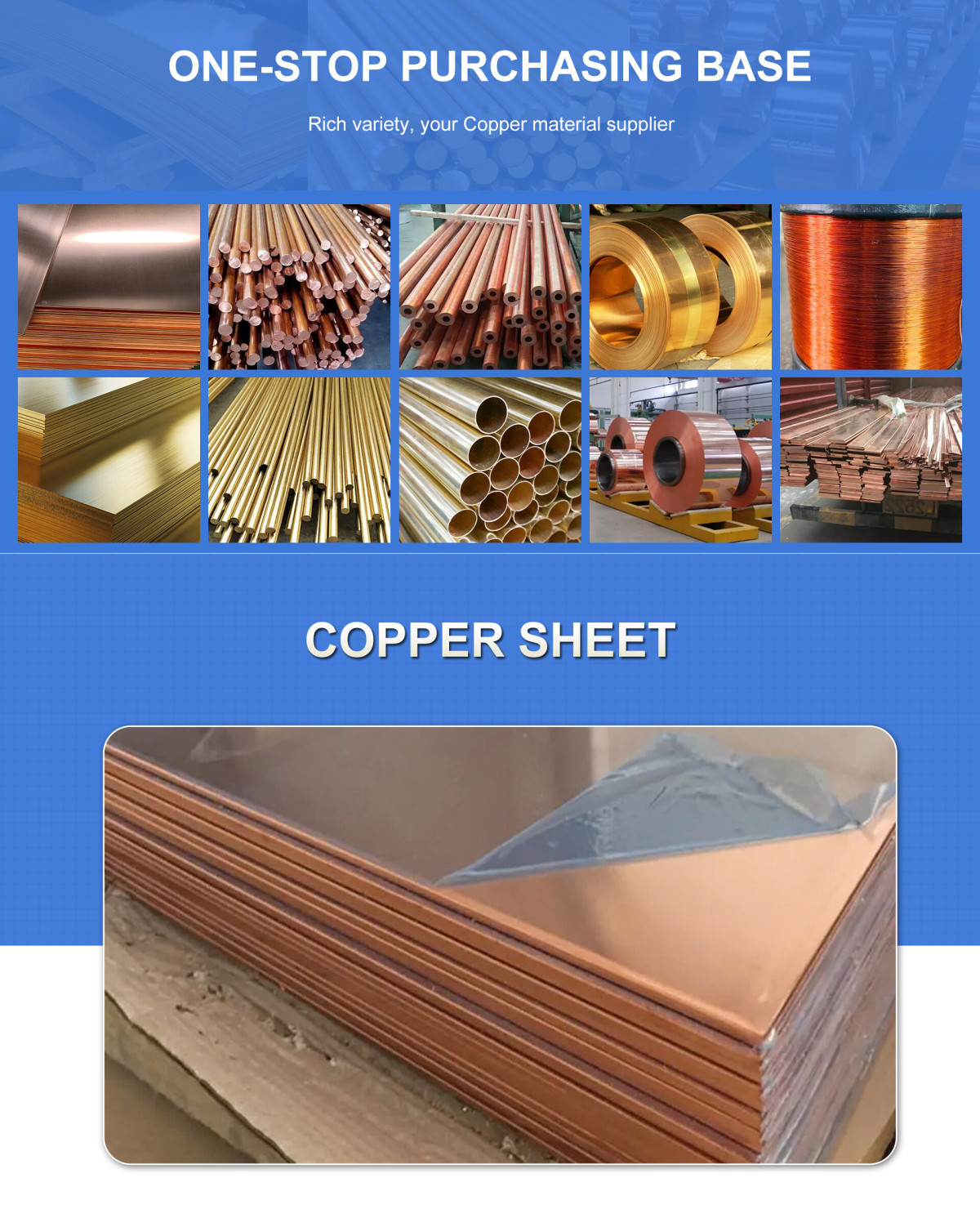
Size range and international standards of C17200 copper plate:
1. Size range of C17200 copper plate
Conventional plate:
Hot-rolled plate: thickness 4-150mm, width 200-3000mm, length 500-6000mm.
Cold-rolled plate: thickness 0.2-12mm, width 100-3000mm, length 500-6000mm.
Spot plate: thickness 0.1-100mm, length ≤10000mm, width ≤2000mm.
Special specifications: such as 2.02101000mm beryllium copper plate available from stock, or thickness 8-260mm of cast/forged plate.
Sheet/strip:
Rolled strip: thickness 0.05-3mm (domestic) or 0.06-0.8mm (Japan NGK), width 200-400mm.
Imported sheets: width 0.05"-16" (about 1.27-406.5mm), thickness 0.002"-0.063" (about 0.05-1.61mm).
Foil: thickness 0.05-0.1mm, width 40-600mm, supplied in rolls.
International Standards
The international standards followed by C17200 copper plate mainly include:
ASTM series:
ASTM B194: Specification of chemical composition and mechanical properties of copper alloy plates, sheets, strips and rolled bars, with the default alloy being C17200.
ASTM B196/B196M: For bars and strips, but involving material requirements of C17200.
ASTM B248: Supplementary description of dimensional tolerances and test requirements.
Other standards:
AMS 4533: Aerospace material standard, applicable to high-strength beryllium copper alloys.
ISO 15156/NACE MRO175: For corrosion resistance requirements, applicable to the oil and gas industry.
AISI C17200: American Iron and Steel Institute standard, specifying the range of chemical composition.
JIS H3130/H3270: Japanese Industrial Standard, applicable to imported beryllium copper strips.
Chemical composition (weight percentage)
Core elements:
Beryllium (Be): 1.80-2.15%
Cobalt (Co): 0.35-0.65%, or ≥0.20% when combined with nickel.
Nickel (Ni): 0.20-0.25%, or ≤0.6% when combined with cobalt.
Copper (Cu): Remainder, usually ≥99.5%.
Impurity limits:
Silicon (Si), iron (Fe), aluminum (Al) are all ≤0.15%.
Titanium (Ti): 0.10-0.25%
The performance indicators are significantly affected by the heat treatment state, mainly divided into age-hardened state and annealed state:
Age-hardened state (high-strength state):
Tensile strength: 1105-1520 MPa, up to 1520 MPa (220 ksi).
Yield strength (0.2% offset): 1035-1345 MPa.
Hardness: 38-44 HRC, up to HRC 45 after peak aging.
Elongation: 1-2%, low elongation is associated with high strength.
Annealed or soft state:
Tensile strength: 590-830 MPa.
Elongation: up to 24%.
Other key properties:
Elastic modulus: 128-185 GPa, different literatures have different values due to different test methods.
Fatigue limit: equivalent to special steel, with high fatigue resistance.
Impact toughness: at least 32 J.
Physical properties
Density: 8.25-8.36 g/cm³.
Thermal conductivity: 105 W/(m·K) (20℃), some literature gives higher values (324 W/(m·℃), the unit or test conditions may be different).
Electrical conductivity: 18-22% IACS, high conductivity is one of its core advantages.
Thermal expansion coefficient: 17-24.3×10⁻⁶/℃.
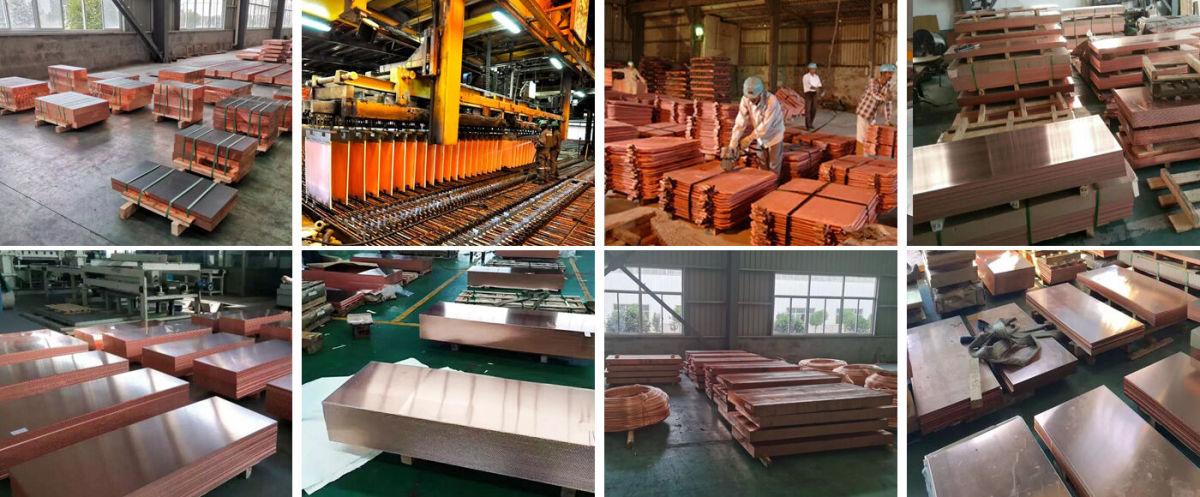
Production process and product advantages of C17200 copper plate:
1. Production process
Hot processing and cold processing
C17200 beryllium copper plate adopts hot forming processes such as hot rolling, hot extrusion, forging, etc., and has good cold processing performance, and can be cold rolled, stamped, bent and other operations. Its high thermal conductivity (about 105W/m·K) facilitates rapid heat dissipation and shortens the processing cycle.
Heat treatment process
Solution treatment: Improve the plasticity of the material through high-temperature solution (such as 930℃) to facilitate subsequent forming.
Aging treatment: Aging treatment (1.5-2 hours) at 315-320℃ significantly improves hardness and tensile strength (up to 1400MPa), while optimizing conductivity (22-28% IACS).
Stress relief treatment: Eliminate processing residual stress to ensure dimensional stability in long-term use.
Precision processing and testing
High-pressure forging technology is used in the production process to ensure no sand holes, pores, and dense organization. Before leaving the factory, it must pass hardness test (such as HRC38-45) and flaw detector test to ensure quality.
2. Product advantages
Excellent mechanical properties
High strength and hardness: tensile strength reaches 1100-1400MPa, hardness HRC38-45, far exceeding ordinary copper alloys and close to the level of medium-strength steel.
High elasticity and wear resistance: elastic modulus reaches 128GPa, wear resistance is 7 times that of tin bronze, suitable for high-load friction parts such as bearings and molds.
Excellent physical and chemical properties
Electrical conductivity and thermal conductivity: electrical conductivity 18-28% IACS, thermal conductivity 105W/m·K, 2-3 times higher than steel, suitable for key heat dissipation scenarios (such as mold cooling system).
Corrosion resistance: stable in atmosphere, fresh water, and seawater, resistant to dilute acid and phosphoric acid corrosion, but should be used with caution in ammonia and nitric acid environments.
Non-magnetic and explosion-proof characteristics: impact does not produce sparks, suitable for petrochemical and mining explosion-proof tools.
Processing and functional advantages
Easy processing: supports welding (electron beam welding, laser welding), brazing and complex shape forming (such as mirror polishing).
Thermal stability: softening temperature reaches 930℃, and it still maintains wear resistance at high temperature.
III. Application fields
C17200 copper plate is widely used in:
Mold manufacturing: injection molds, die-casting mold inserts, hot runner systems, to improve demolding efficiency and life.
Aerospace: aircraft structural parts, engine parts, to meet high strength and high temperature resistance requirements.
Electronic appliances: relays, connectors, spring sheets, taking into account conductivity and mechanical strength.
Automobiles and ships: radiators, transmission parts, to enhance durability and corrosion resistance.
Q1:Do you provide samples? Is it free or extra?
A1:Yes, we can provide samples free of charge and the customer will pay the freight.
Q2:What if I don't have export experience ?
A2:We have reliable forwarder agent which can ship items to you by sea/air/Express to your doorstep. Any way, we will help you choose the most suitable shipping service.
Q3:How long is your lead time?
A3:If it is in stock, it is usually 5-10 days. Or, if there is no inventory, 15 days, depending on the quantity.
Q4:What are your terms of payment?
A4:30% T/T deposit in advance, 70% T/T balance within 5 days after B/L copy, 100%.Irrevocable L/C at sight, 100% Irrevocable L/C after receive B/L 30-120 days, O/A.
Q5:How is your technical support?
A5:We provide lifetime online support through Whatsapp/ Skype/ Wechat/ Email. Any problem after delivery, we will offer you call anytime.
Welcome To Your Inquiry
What can we help you?
RELATED PRODUCTS

